If you’ve noticed drafts in your home during the colder winter months, you can insulate your windows and retain heat. With such insulation you can both reduce heating costs and ensure more comfort in your living spaces. Rising energy prices and seemingly endless cold snaps mean insulated windows are more important than ever right now. Here are some common materials and methods to help you find the best, most cost-effective ways to insulate your home.
Why you should insulate your windows
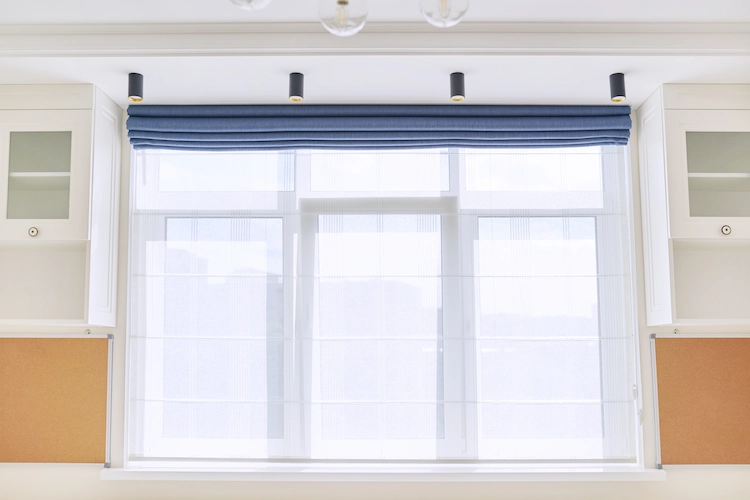
Although a window seat offers perfect views of snow-covered tree branches, it’s not necessarily the most comfortable place to sit on chilly winter days. During the cold season, a lot of heat can escape through the glass panes and through cracks or gaps around the window frame. In such cases, you should put on a blanket or at least a thick sweater before you risk catching a cold. Additionally, an average home or apartment typically loses up to a third of the heat energy stored for heating due to poor window insulation. Fortunately, there are several ways to minimize this heat loss. To do this, you can follow a few simple steps and prepare your windows for the low winter temperatures in a weekend.
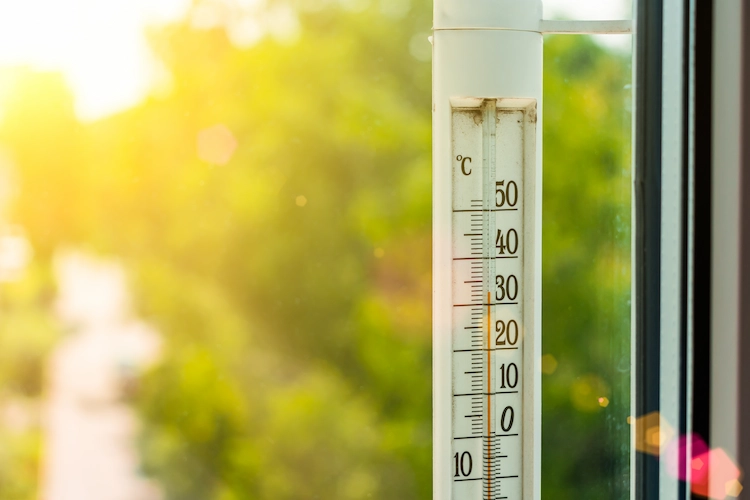
So before you look at large living areas like walls, ceilings and floors, consider smaller break-in points like windows, which are the more likely culprits. Their insulation and airtightness is the key to keeping your home warm in colder weather and cooler in summer. However, while some measures are relatively inexpensive to carry out, others, such as external or internal wall insulation, can be more expensive. Replacing windows with more energy efficient versions can also be a costly task. Therefore, finding ways to keep heat inside is essential, particularly for those with older double glazing or single glazing.
Start with the outside of the window frames
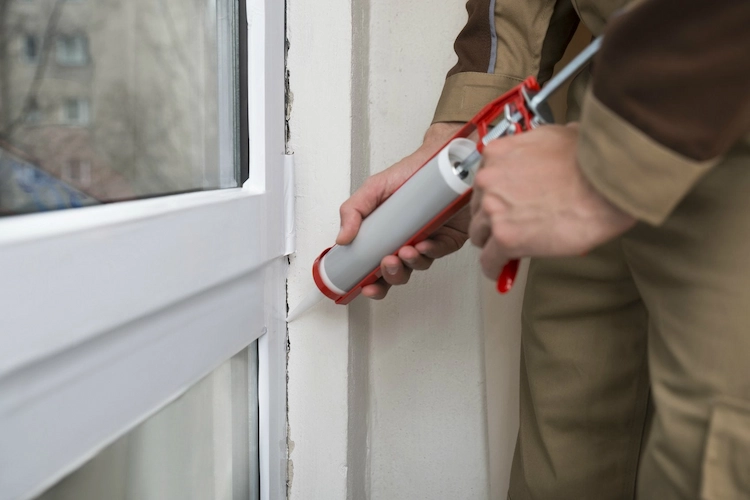
Decades of exposure to weather conditions can weaken one of the most important defenses against heat loss – exterior seals. Once these begin to crumble, cracks can form around the window frame. So if you feel drafts coming from your closed windows, you should take quick action to replace the exterior insulation along the window frames before the weather worsens. Follow the next steps to complete the task easily:
- Check the weather first before starting the process. For a successful sealant application, you need clear skies and no snow or rain for 24 hours. The ideal temperature should be above approx. 7 °C.
- Then use a strong putty knife to clean the old caulk and peeling paint from the window edges.
- Afterwards, wipe the surface of any residue with a damp rag.
- Allow the surface to dry for a few hours so that the new grout adheres well. It’s best to start the project early in the day to allow enough drying time. You can also let it dry overnight, but depending on the outside temperature, you may have a cold night after scraping off the old caulk.
- Start by loading a caulking gun with outdoor silicone caulk and holding it at a 45-degree angle to get deep into the cracks around the window frame.
- Then apply a continuous bead of caulk between the frame and the trim around the window. Any caulk that oozes out of the crack should be gently pushed in with a putty knife.
- Allow the new sealant to cure overnight to provide the best protection from wind and moisture.
Choose the right insulation materials for indoors
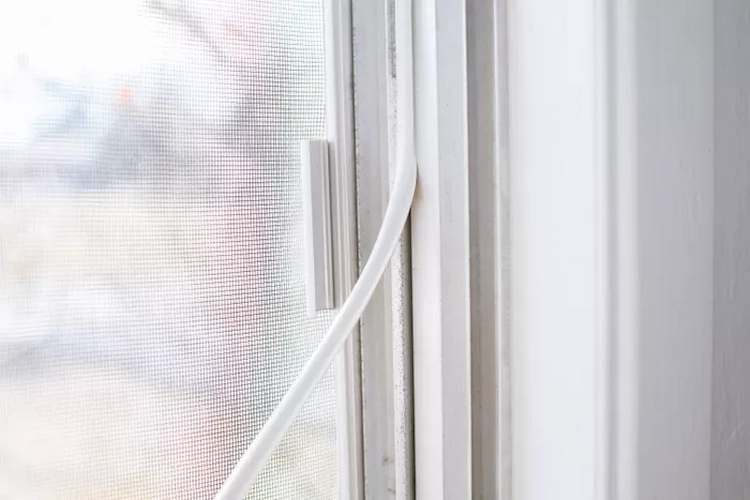
The window sashes, or the parts of the window that move to open and close, are the main points most people focus on when insulating their windows. While insulation is important here too, you shouldn’t neglect window glass or other draft-preventing insulation. It’s best to take a three-pronged approach to insulating the inside of your windows by using weatherstripping, caulk, window film, spray foam, draft excluders, or energy-efficient window treatments like thermal curtains .
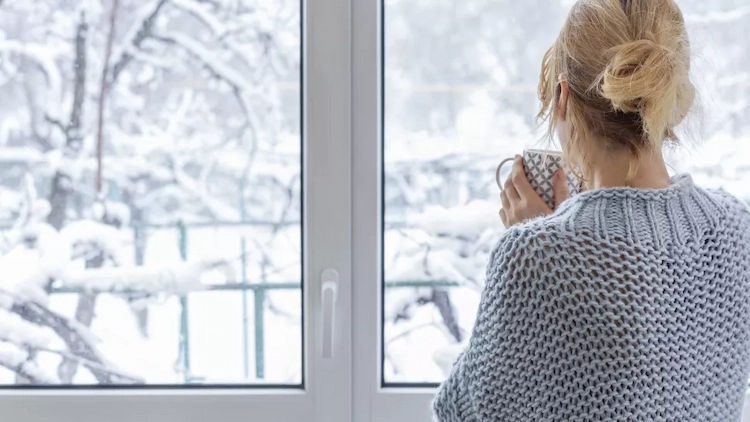
Additionally, understanding how and why an insulation product or material you choose to insulate your windows may work can help. Therefore, before starting thermal insulation, be sure to familiarize yourself with the specifics of each insulating material.
Use sealing tape and insulate windows
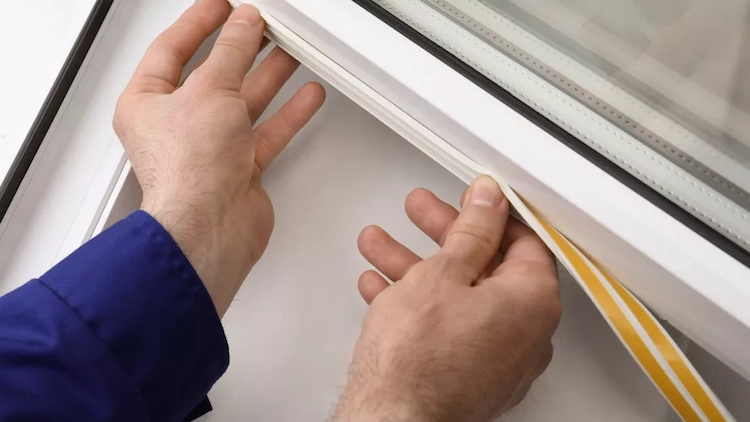
Weatherstripping is an excellent, quick and cost-effective way to insulate interior windows. One of the most common types of draft seals that cost little is the self-adhesive foam strips, which you can purchase in rolls and cut to length. Do you have a gap where the window moves? Use weatherstripping tape either by applying it where none exists or by replacing an old one with it. In fact, if the strips start to crumble, replacing them is one of the quickest ways to improve the insulation of your windows without having to replace them. Peel strips with self-adhesive backing can also be easily removed by hand without any tools. However, after removing the sealing tape, it is recommended to wipe the window sash with a damp cloth and household cleaner. Then allow it to dry thoroughly before applying new weatherstripping tape to it. Here are the instructions for attaching:
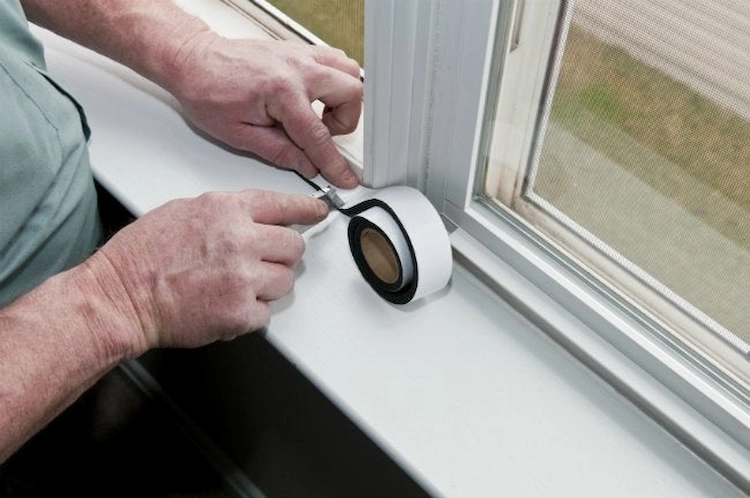
- Unroll the weatherstripping tape and begin pressing it into place around the window with your fingers. If you need to press the strip in a little more, you can use a blunt object like a paint stirrer.
- A sharp object like a putty knife can cut the tape, but it is also effective at getting the material into tight spaces.
- Move slowly and methodically to ensure that the weatherstripping fits snugly into the gap.
Thermal insulation with window film

Applying window film is also a common method of insulating windows as it is inexpensive and effective. The film is made of plastic and is often sold in kits that contain everything you need to apply it, including adhesive tape. This is how you can attach window film:
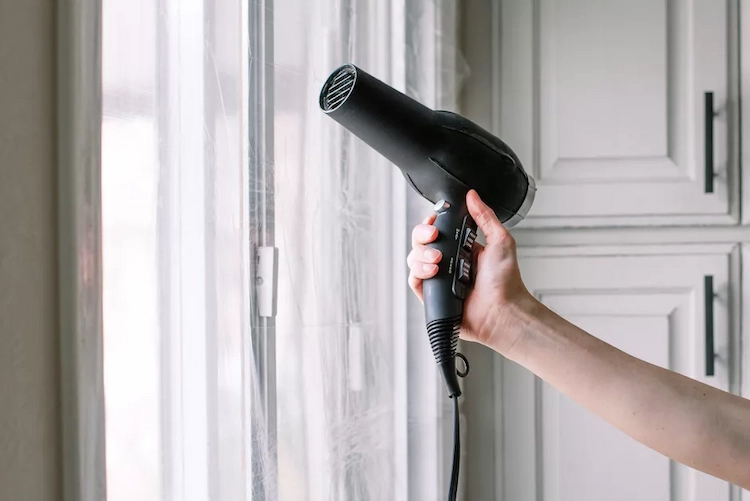
- First, make sure your window is sparkling clean before measuring it and cutting the film to the desired size.
- The manufacturer’s instructions usually state that you should leave a little room around the edges for size.
- The tape is then applied around the frame so that the film can adhere to it.
- Once you are sure there are no wrinkles or creases in the film, you will need to heat it to shrink it for a snug fit. This is usually done with a hairdryer.
- In addition, window film is usually easy to remove when you no longer need it. However, keep in mind that the tape can sometimes take paint with it, especially on old wooden window frames.
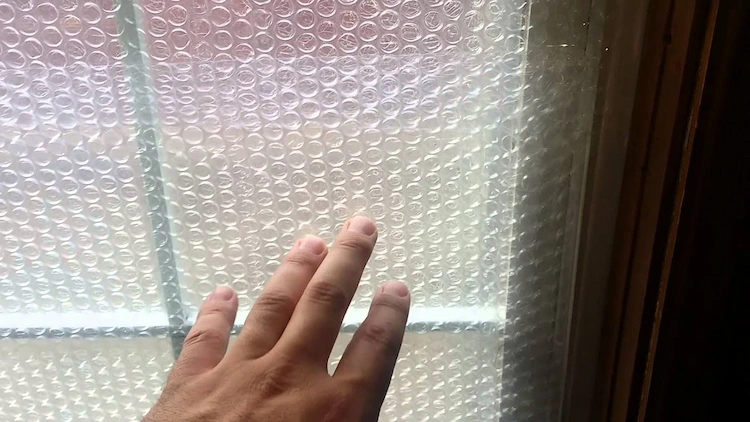
Another trick for thermally insulating the windows is to stick bubble wrap on them. This is a solution that not everyone would jump on, but an effective one nonetheless. Don’t expect to be able to enjoy the beautiful view when you open the curtains. Experts also suggest misting the windows with water before sticking the bubble wrap to the window with the bubble side facing the glass.
Insulate gaps and cracks on the window with silicone sealant
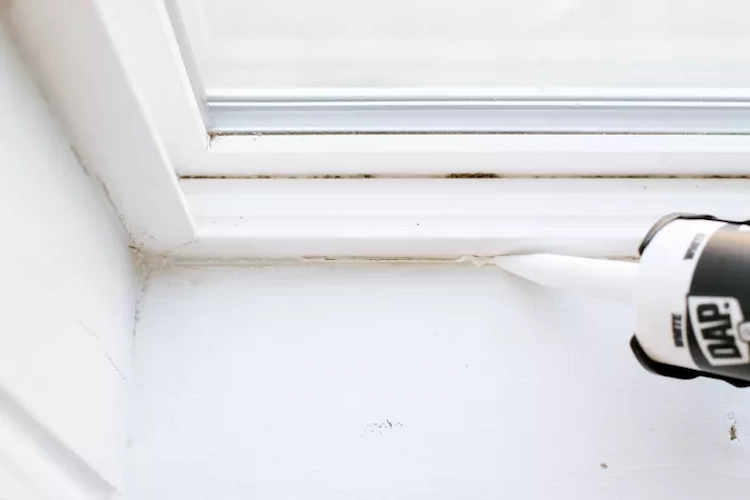
Silicone sealing is very popular with do-it-yourselfers and offers a particularly effective method of insulating windows. Use silicone caulk to seal gaps between the window frame and the wall, as well as any joints in and around the frame. Before you begin, however, you should scrape off any flaking old paint or caulk and then again use a caulk gun to neatly apply new silicone caulk. However, do not use it to block the tiny round or rectangular external drain holes that are there for drainage. You will probably need about 1/2 of a cartridge of caulk for one window. If you’re new to caulking, practice the technique on a paper towel before insulating your windows. It will help you develop the pulling motion you need to dispense the caulk into the crack as it comes out of the tube. And so it goes:
- First, remove old and cracked joints with a spatula or screwdriver.
- First, make sure the area is bone dry before caulking.
- Then cut the tip of the caulk tube at a 45 degree angle.
- Insert the hose into the caulk gun and pull the trigger to introduce the material into the crack.
- Poetry in one movement rather than with starts and stops. This creates a clean, continuous stripe.
- If the caulk appears to be flowing out of the crack, use a putty knife to push it back in.
- Allow the caulk to cure for 24 hours.
Insert spray foam into the openings
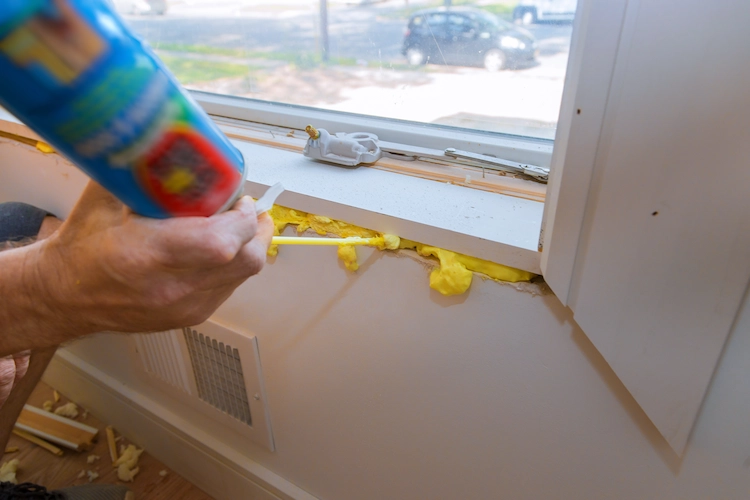
Older homes typically need more insulation around interior windows. Expanding spray foam may be easier to use than hand-laying fiberglass batting in such cases.
- First, start by removing the trim around your window.
- To do this, place a putty knife behind the molding to gently peel it away and reveal the large gaps around the frame.
- Next, insert the nozzle of the spray foam can deep into the gap (probably a few inches deep) before spraying.
- The foam will begin to expand immediately, but it may take hours to fully expand.
- Once the foam has completely dried and expanded, replace the molding around the window.
Install horizontal draft excluders and insulate the windows
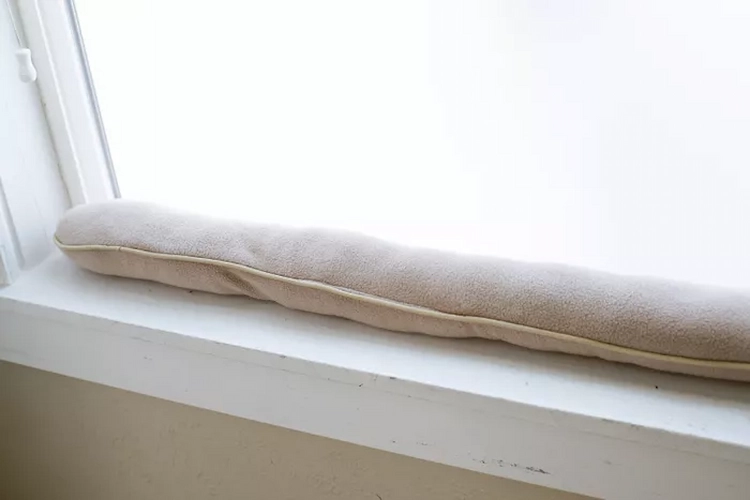
This is another easy and cheap way to stop annoying drafts and keep the heat inside. Draft excluders are small, long, tube-like cushions that sit under a door or on the windowsill to block any gaps. You can usually find these pre-made at home goods or hardware stores. However, you can also make your own draft excluder using long socks by stuffing them with fabric and sewing them. Lines should be as long as your window.
- Also fill the sock or fabric tube with rice, dried corn kernels for popcorn, or dried beans.
- After filling, close the end of the hose by hand or machine seam.
- Close your window and place the draft excluder firmly over the point where the window sill and the bottom of the window meet.
- This seal can prevent cold or hot air from entering or exiting through gaps and cracks.
- If you have a double-hung window, you can also place a draft excluder on the top rail above the sash lock when the window is closed to prevent even more drafts.
Use thermal curtains or roller blinds for thermal insulation
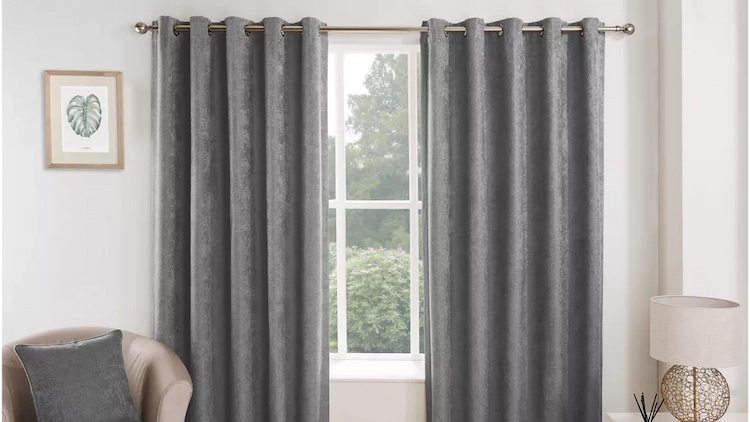
Thermal curtains and blinds are one of the best ways to insulate windows. If you also buy high-quality products, they should also be able to prevent your living space from overheating in the summer months. Essentially, thermal curtains are made up of at least three layers of material that work together to regulate the temperature of a room. It is also possible to buy thermal blinds. These usually feature tiny honeycomb pockets or something similar that trap cold or warm air to create a cozy and energy efficient atmosphere.
- How you hang such curtains makes a difference when it comes to energy efficient window treatments.
- The thermal curtains should be hung as close to the window as possible and extend to the windowsill or the floor.
- For maximum effectiveness, place the curtains as high as possible on the ceiling.
- Seal the curtains on both sides to further minimize heat exchange.
- Using magnetic or loop tape to seal the sides of curtains to the wall and overlapping panels in the middle on the sides can reduce heat loss by up to 25 percent.
- When such blackout blinds fit closely to the window, they can also reduce heat loss through the window by 40 percent or more and unwanted solar heat by up to 80 percent.
If you would like to insulate your window frames yourself with sealant, also read: Sealing window frames from the inside and outside: This is what you can do to prevent drafts before winter comes!



